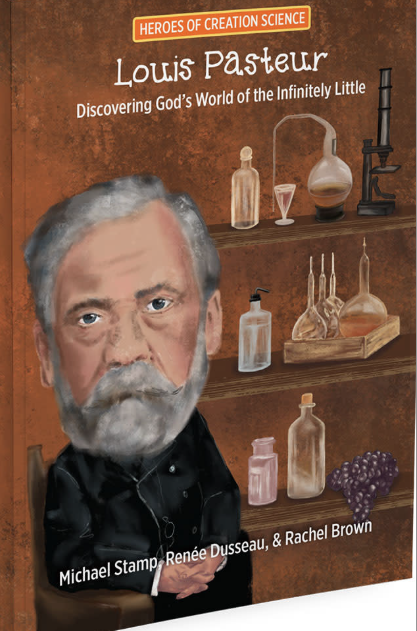Archive
It’s payback time for Radarsat, the radar imager satellite operated by the Canadian Space Agency. In exchange for the satellite’s launch by an American Delta II rocket on November 4, 1995, Canada agreed to provide NASA with access to a certain amount of data and to execute a realignment twice during the mission in order to allow for the mapping of the Antarctic continental ice sheet. Consequently in September 1997, Radarsat rotated its viewing apparatus 180 degrees and on September 14 the first radar images of the South Pole were taken. The resulting images proved to be quite stunning, better than the experts had dared to hope. And the information collected will be most welcome. Resolution of controversies over global warming and the fate of the Antarctic ice sheet, could have important impacts on government policy in the years to come. Read the rest of this entry »
A well known nineteenth century musical comedy features the Mikado, a head of state who knew what he wanted. He wanted to execute people he did not like. Indeed he had a little list of these proposed victims. One of the most amusing solos in the musical is his refrain
- I’ve got a little list
I’ve got a little list
There will none of them be missed
There will none of them be missed! Read the rest of this entry »
A tiny news item caught my eye: “Creature liberated from oilsands” (Edmonton Journal November 4, 2000 G1). Apparently a rare marine fossil was found earlier this year near Fort McMurray. The oilsands are making quite a name for themselves as a source of fossils. Besides unfossilized remains of trees, excavators have turned up nine marine reptiles, mostly plesiosaurs, from the oilsands. One of the earlier specimens, like the recent find, was identified as an ichthyosaur. Read the rest of this entry »
Several years ago I tried my hand at bird’s nest building. It wasn’t actually my idea to do this. As mother helper of the day, it was my job to assist the kindergarten class in their various projects. One of these was the nest building. We were provided with grass, feathers, wet mud and so one. What we didn’t have was know-how. One person held grass in a rough circle while another tried to daub on wet mud. What a mess we made! One thing we did learn was a profound respect for birds. How do they manage with only beaks, feet and wings? The birds obviously know what they are doing. Who told the birds how, what, where and when to build their nests? This is a very good question. Read the rest of this entry »
On Tuesday, June 27, 2000 the National Post published a two page spread. At first glance, it did not look that exciting. The text on these pages consisted only of four letters, C, G, A and T, arranged in seemingly random order. The final line, for example, begins
- CATGGTGTCATACTGCTCTTTATTTTATT… Read the rest of this entry »
An old song runs over and over through my head: “We’re off to Alaska, land of the midnight sun!” Indeed this attractive feature of the far north attracts scores of tourists. However like many situations, this one involves good news and bad news. The good news is the endless summer days. The bad news, of course, is the endless winter nights. All living creatures thrive in the north during the summer. Plants grow quickly and animals rise their young. The winter however is not only dark, but also very cold. How, one wonders, would organisms fare there if the climate were still dark, but not cold? That’s an interesting question because there is scientific evidence for such a situation in the past. Some of the evidence is Canadian and some is American. Read the rest of this entry »
Have you ever discovered something new, like a new recipe, a new and better way to carry out a task, or a new object in the sky? Whether you have invented a device which will make you rich, or whether you have identified a new phenomenon in nature, the joy of discovery is a reward in itself. When it comes to identifying new organisms, many people have turned their attention to the rain forest. New plants and new animals, often insects, are routinely described from that part of the world. Deep sea divers have also encountered some very strange creatures from the ocean depths. The sea between Denmark and Sweden, however has been fished for many centuries. We would not expect to find any new creatures in those cold waters, would we? Read the rest of this entry »
Have you ever wished that you could rewrite an event in your life? It happens to all of us once in a while, of course. However the results are a little worse when something has been published. It’s harder to imagine that the event never happened. Thus it was in 1999 that some palaeontologists positioned themselves far out on a limb (metaphorically speaking), and in early 2000 somebody cut the branch off. Oooops…… Read the rest of this entry »
Have you ever imagined yourself as a best selling author? Detective stories sell well. Let’s give it a try. My story is set in an imposing country home in England. The wealthy owner happens to wander into his wife’s dressing room. She is away on an expedition to the beach. The gentleman notices his wife’s diamond necklace carelessly flung onto the table amidst expensive perfume bottles. Horrified, he swoops down upon the jewelry, only to discover that this is a cheap imitation of the real necklace. Promptly he calls the local inspector who sends out four detectives. The detectives snoop around and each presents his theory on the case. Detective Smith declares that the butler stole the necklace and sold it in London. Detective Jones strongly suggests that his evidence implicates the maid. Detective Cooper accuses the daughter’s boyfriend of helping himself to the jewels. Detective Trent indicates that the evidence points to the son of the family who has wasted huge sums of money on fast cars. The gentleman is now thoroughly confused. When his wife returns home, he shares all these distressing details with her. It is then that his wife informs him that actually she lent the real necklace to her sister, Lady Hampton, who is scheduled to attend a royal court event that very evening. Read the rest of this entry »
As a teenager I was active in the Boy Scouts, and in lower levels of school I had an interest in science and math. I was a radioman in the US Navy during the Second World War, and in college I majored in zoology with very strong concentrations in Bible and chemistry. Read the rest of this entry »
Mankind has always been fascinated by the night sky. Indeed it seems that some of the earliest recorded observations from nature were astronomical. For example, in the mid nineteenth century, English archaeologists uncovered a huge library of clay tablets in the palace of Assyrian Emperor Sennecherib of Nineveh, who lived about seven hundred years B.C. Among other clay tablets were detailed records concerning the planet Venus. It’s interesting that the pattern of appearances and absences from the sky is different from what we see today. It’s hard to say if the observations were accurate, but we do know that many of these ancients took their studies very seriously. The wise men in the gospels are a good example. Moreover an earlier document, the book of Job, mentions constellations such as the Pleiades. Read the rest of this entry »
New Uses for Old Patents
Our uses for good bonding agents are almost endless. We glue craft items, chipped china, broken toys, furniture which has come apart, and so on. The list seems endless. There are industrial uses and medical uses for glue too. During the Vietnam war, for example, the American army developed a medical superglue for treating wounds. This product was less than ideal however because it required dry surfaces in order to set. But, as everyone knows, wounds tend to be wet and yucky. Certainly there would be no dry surfaces inside the body. Now English scientists are getting into the act. Actually they are working with a glue which was invented long ago. They are just learning how to make use of this special product. Read the rest of this entry »
Indeed it was a “tragedy,” opined an editorial in the New York Times (August 13, 1999). Within this context, naturally enough, the editorialist continued “deep sadness is the most sensible response.” The reader might have been pardoned for suspecting the opinion piece was actually written tongue in cheek. The event which called forth this public mourning was none other than a decision by the State of Kansas’ Board of Education. That action of the Board, according to the NY Times, “makes it more likely that many schools will spend less time on evolution …” Oh really? One might have understood if the newspaper had called the action regrettable or ill-advised, but “tragic?” What was going on here? Read the rest of this entry »
The new generation of creation scientists are young, smart and sophisticated. Along with geneticists, taxonomists, and palaeontologists, experts in DNA sequencing analysis and phylogenetic analysis (the search for relationship patterns) are asking new questions and revisiting old issues. No longer do they concentrate on fighting evolutionary theories. They don’t need to. Rather, they are forging new creation-based theories. With this positive approach, they are certain to attract yet further support from Christians in educational and professional circles. It was to learn more about some new initiatives that I attended a conference in Lynchburg, Virginia on August 5-7, 1999. Read the rest of this entry »
As a rule, scientists seek answers. They want to answer the “why” questions. Why, for example, are plants green? Why is blood red? These are very simple queries compared to the biggies like why does quantum physics work. Nevertheless, believe it or not , we are as far from answering why chlorophyll is green, and blood cells are red, as we are from explaining quantum mechanics. Two commentators in fact recently termed the reason blood is red a “visual pun of molecular wit.” (Morrison and Morrison. 1998. Scientific American. March p. 106) The explanation for colour in chlorophyll is similarly obscure. The situation becomes even more interesting when we discover that chlorophyll and the heme component of hemoglobin are chemically extremely similar . Read the rest of this entry »






